Jun 29, 2018 | Communication, IIASA Network, United Kingdom, Women in Science
by Melina Filzinger, IIASA Science Communication Fellow
As a science communication fellow at IIASA, I had the opportunity to talk to Dame Anne Glover, who was recently made an IIASA distinguished visiting fellow. Originally a successful researcher in microbiology, she previously served as the first chief scientific adviser for Scotland, as well as the first chief scientific adviser to the president of the European Commission, and is now president of the Royal Society of Edinburgh.

© Anne Glover
In your roles as scientific adviser you had to know about a broad range of relevant scientific topics. How do you keep informed about topics that lie outside your own area of research?
Of course no-one can be an expert in all the different areas of science. As a microbiologist, I am very specialized, but I am also a generalist when it comes to other areas of research. I keep up to date by reading articles about lots of different topics, from climate change to chemical toxicity or Alzheimer’s research, just because I am curious and interested.
However, if a minister or policymaker asked me to brief them on a particular topic, I would consult organizations with expertise in that area and ask them questions until I felt that I understood the topic. Then I would translate that scientific, often jargon-filled research into something that makes sense to a non-specialist. Part of the role as scientific adviser is not so much being an expert as being a translator.
Do you follow any science publications aimed at a broad audience? What are your favorites?
There is an organization called Sense about Science that publishes reports on issues that are being discussed among the public. They also have a fabulous service called Ask for evidence. Anyone can go onto their website and type a question, for example “Do female contraceptive pills end up feminizing fish in water streams?”, and they have a panel of experts that can comment on that, give you the evidence, and explain why this issue might or might not be a problem. It’s fantastic! I often use these answers as a starting point to find out about something.
I follow several other popular news outlets as well, for example New Scientist or the science and nature section of the BBC news app. I don’t expect absolute accuracy from those, I just expect to get a first impression of a research area. I also use Twitter as a source of information, because people often tweet about interesting science articles.
You are very active on Twitter. Has social media been useful to you, and how can it be used effectively?
I came to Twitter kicking and screaming when I joined the European Commission as chief scientific adviser to the president. I just thought that I had way too much to do to spend time on social media. It was Jan Marco Müller, a former colleague and now head of the directorate office at IIASA, who convinced me that Twitter could actually be a good way to tell people what I was doing, especially since transparency about my work is very important to me.
Have I found it useful? Enormously so! When I was at the commission I used it to see what really got people excited, either in a good way or in a bad way. When people were against a new technology, it helped me to understand their reasons. Tweeting is also an opportunity for me to help other people by highlighting interesting and useful events or initiatives. It can even be a little bit addictive.
How can science communicators and journalists reach a wide audience without oversimplifying scientific content?
The biggest nervousness I see among scientists is that of oversimplification. That is because, if you do oversimplify, you’re not going to upset your lay audience, but you will upset your scientific audience. I struggled with this for quite some time myself. Generally speaking, I would always favor simplification, of course not to the point of saying something that’s not true. I would however encourage scientists to be less afraid of simplification when speaking to a non-scientific audience. You will never be able to please everyone, you can only do your best to make an abstract subject accessible and interesting to people.
Do you have any tips for young scientists to make their work visible to the public?
In many cities there are science centers, museums, and other places where people get together, and there is nothing, other than their own modesty, to stop a young scientist from offering to talk about their work there. If it seems too daunting to do that kind of thing on your own, you could maybe do it with some of your colleagues. There are lots of opportunities out there for young scientists. Nobody is going to give those opportunities to you, but nobody is going to stop you either! You just have to take them!
If you do take them, think about what audience you are trying to reach beforehand, for example, if you want to talk to children or young adults. Then just be creative in how you present your research–try to build a story. Two good things will come out of it: one is that even if only 50 people show up, and only five of them are interested in what you are saying, you will have transformed the lives of those five people and made them excited about something. That is an achievement. The second thing is, that if you are doing things like that, and the young scientist next to you isn’t, it makes you different, and you have added value. You will also gain experience in communicating, which in turn will make the impact of your science much greater in the future. Everybody wins really, and it can be good fun as well.
Note: This article gives the views of the authors, and not the position of the Nexus blog, nor of the International Institute for Applied Systems Analysis.
Feb 12, 2016 | Systems Analysis
By Sergio Rinaldi, IIASA Evolution and Ecology Program and Politecnico di Milano, Italy
Is it possible to predict how love stories develop, progress, and end using mathematical models? I have studied this question over the past 20 years with a group of researchers at IIASA and at the Politecnico di Milano, and as we show in our new book Modeling Love Dynamics (World Scientific, 2016), the answer is yes. The emerging message is that prediction is possible, if we can describe in formulas the way each individual reacts to the love and to the appeal of the partner.
Consider a standard love story, which develops like those described in a classical Hollywood movie such as Titanic. This story can be easily modeled, if one considers reasonably appealing individuals who increase their reaction with the partner’s love – so called secure individuals. Starting from the state of indifference, where the individuals are at their first encounter, their feelings continuously grow and tend toward a positive plateau.

Mala Powers and José Ferrer in Cyrano de Bergerac, 1950. – Public Domain
Love stories become more intriguing when one individual is not particularly appealing, if not repelling, as in the fairy tale “Beauty and The Beast.” Indeed, in these cases, there exists also a second romantic regime, which is negative and can therefore entrain, in the long run, marital dissolution. In order to avoid that trap, people who are not very charming, or believe to be so, do all they can to look more attractive to the partner. At the first date, she wears her nicest dress and he shows up with his best fitting T-shirt. However, after a while, the bluffing can be interrupted, because the couple has entered the safe basin of attraction of the positive regime. Needless to say, the model also supports much more sophisticated behavioral strategies, like that described by Edmond Rostand in his “Cyrano de Bergerac,” the masterpiece of the French love literature.
Not all individuals are secure. Indeed, some people react less and less strongly when the love of the partner overcomes a certain threshold. These individuals, often very keen to flirtation, are incapable of becoming one with their partner. The model shows that couples composed of insecure individuals tend, with almost no exception, toward an unbalanced romantic regime in which the most insecure is only marginally involved and is therefore prone to break up the relationship at the first opportunity. This is why after just 20 minutes of the very long “Gone with the Wind,” when one realizes that Scarlett and Rhett are both insecure, the model can already predict the end of the film, where he quits her with the lapidary “Frankly, my dear, I don’t give a damn.” The same conclusion is expected if only one of the two individuals is insecure. This explains the numerous failures in the romantic life of some individuals, like the beautiful star Liz Taylor, who is described as very insecure in all her biographies, and went, indeed, through eight marriages.

Clark Gable and Vivien Leigh in Gone with the Wind, 1939 – MGM Pictures | Public Domain
Mathematical models can also be used to interpret more complex romantic behaviors. Particularly important is the case of individuals who overestimate the appeal of the partners when they are more in love with them (like parents who have a biased view of the beauty of their own kids). Interestingly, if insecurity is also present, biased couples can have romantic regimes characterized by recurrent ups and downs. In other words, the theory says that bias and insecurity is an explosive mix that triggers turbulence in the life of a couple.
In the second part of the book we focus on the effects of the social environment and to the consequences of extra-emotional compartments. In this context, our analysis of the 20-years long relationship between Laura and the famous Italian poet Francis Petrarch shows that poetic inspiration is an important destabilizing factor, responsible for transforming a quiet relationship into a turbulent one.
Finally, we studied triangular relationships, with emphasis on the effects of conflict and jealousy. In all these cases the dynamics of the feelings can be very wild, up to the point of being chaotic and, hence, unpredictable. When this occurs, the life of the couple becomes unsustainable, because painful periods of crisis can virtually start at any moment: a heavy permanent stress. The model can thus explain why the relationship is often interrupted, sometimes even tragically, as in the famous film by François Truffaut “Jules et Jim”, where Kathe’s suicide is perceived as a real relief.
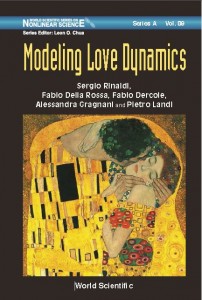 More information: Watch a video of Sergio Rinaldi’s talk at the 2015 Systems Analysis Conference.
More information: Watch a video of Sergio Rinaldi’s talk at the 2015 Systems Analysis Conference.
Reference
Rinaldi S, Della Rossa F, Dercole F, Gragnani A, Landi P, (2015). Modeling Love Dynamics. World Scientific, Singapore [January 2016] http://www.worldscientific.com/worldscibooks/10.1142/9656
Note: This article gives the views of the author, and not the position of the Nexus blog, nor of the International Institute for Applied Systems Analysis.
Oct 6, 2021 | Food, Sustainable Development, Wellbeing
By Frank Sperling, Senior Project Manager in the Integrated Biosphere Futures Research Group of the IIASA Biodiversity and Natural Resources Program
Frank Sperling shares his reflections on issues around sustainable and transformational food production in the context of the UN Food Systems Summit.
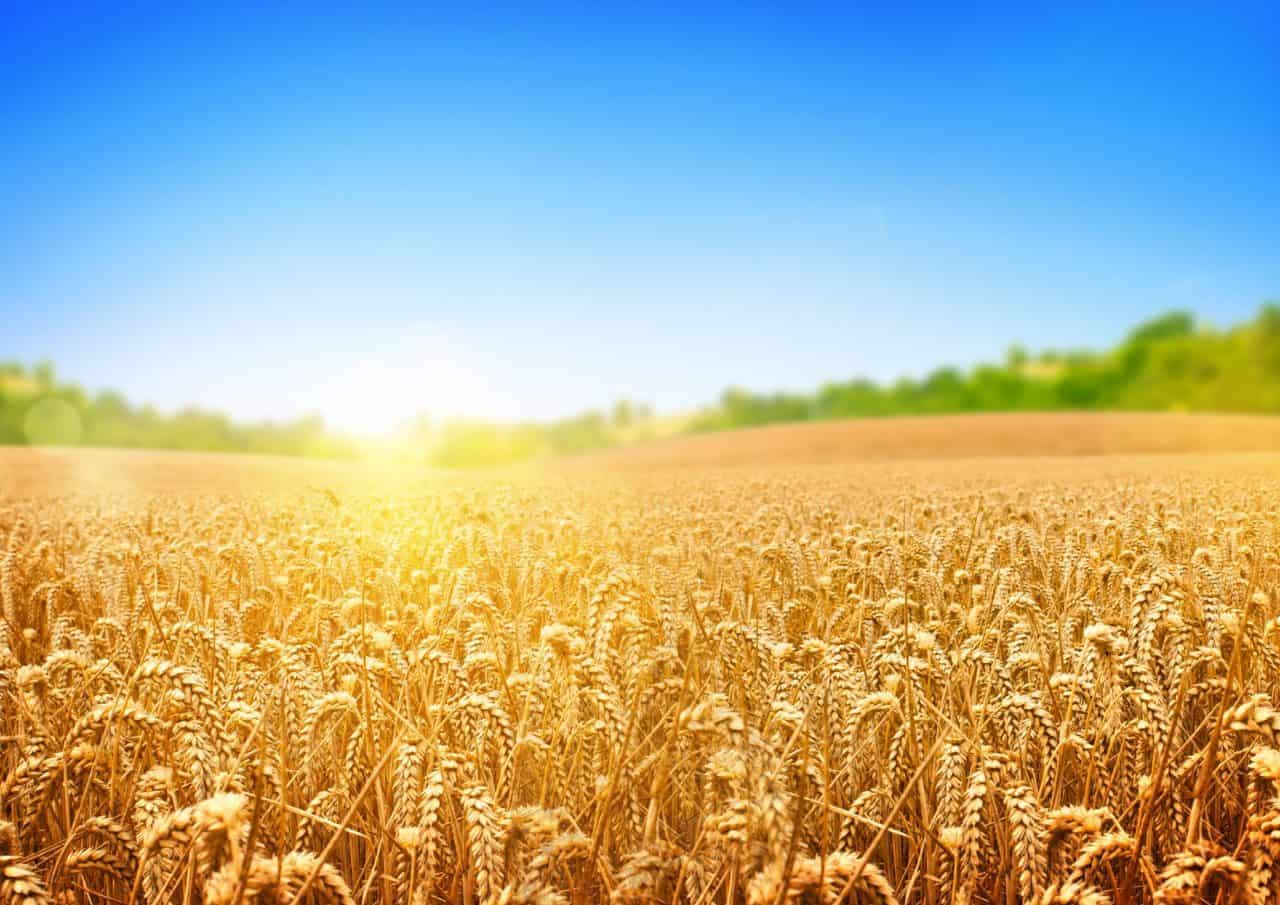
© Solarseven | Dreamstime.com
Bringing together stakeholders from around the globe, the United Nations Food Systems Summit (UNFSS) calls attention to the opportunities, challenges, and promises that the transformation of our food systems can hold to advance sustainable development.
This transformation needs to happen, while the ongoing Covid-19 pandemic reminds us of the manifold vulnerabilities embedded in our food systems, the inter-dependence of our societies, and the entanglement of human and natural systems. The increases in weather and climate extremes that can clearly be attributed to climate change, ongoing biodiversity loss, environmental degradation, and pollution further illustrate that food systems need to manage a broad range of compounding risks and pressures that play out over different spatial and temporal scales. Advancing and securing gains towards the Sustainable Development Goals (SDGs) will not only require meeting multiple economic, social, and environmental objectives, but also demand pathways that ensure a safe navigation through a treacherous and shifting risk landscape. But how do we build resilience into the food system while transforming it at the same time?
Great strides have been made in technologies and practices that can help food systems manage existing and emerging risks. For example, on the production side, timely access to seasonal forecasts and early warning information coupled with extension services can help farmers to make the right decisions for planting and to anticipate, adapt, and cope with possible shocks. Precision agriculture, which harnesses advances in technology to ensure optimal health and productivity of crops and soils, can reduce the need for inputs. Diversification of livestock and agricultural traits can help farmers to reduce production risks in marginal environmental conditions.
Minimizing the spillover risk of zoonotic diseases, mitigating, and adapting to climatic and environmental changes place additional demands on food systems, but also offer new opportunities. Living sustainably requires comprehensively managing land use, enabling for food production, but maintaining and recovering critical ecosystem goods and services, such as carbon and biodiversity. It requires advancing nature-based solutions, where nature is seen as an ally and not an adversary in delivering on development objectives. Strengthening natural capital accounting and incentivizing environmental stewardship by rewarding actors in the food system for efficient and sustainable management of natural resources, and appropriately informing consumer choices will be important ingredients in reducing the environmental impact as well as environmental vulnerabilities of food systems.
The transformation of the food system is an ongoing process. It is therefore important to understand the impact of different changes across the system. Shifts to healthier diets can have important co-benefits in reducing pressure on the environment and natural resources. Such transformation implies, however, that shifts in demand are also matched by shifts in supply, reflecting appropriate adjustments of agricultural production. To accommodate such system shifts and facilitate system transitions over time, the social resilience and adaptive capacity of society must be addressed accordingly.
Food systems operate at different scales, ranging from local to global. Consequently, the role of trade in ensuring food security and human welfare across a range of contexts is critical. Several countries are already dependent on food imports. Trade can help the food security of regions where agricultural activities become less viable with progressive climate change. At the same time, the changing exposure to socioeconomic and environmental risks arising from the increasing inter-connectivity of societies and economies also need to be addressed, as illustrated by the current pandemic. The evolution of food systems has been largely shaped by a drive for efficiency. We must now consider carefully where efficiency needs to be (counter)balanced with an effort to promote greater diversity, and where we must build in greater redundancy to help manage the variety of risks facing food systems.
Forward-looking approaches aimed at transforming food systems towards greater resilience and sustainability will require a suite of measures within, as well as outside food systems. Such measures entail helping livelihoods and sectors to reduce their vulnerabilities and risk exposure, while also enabling the agility of food systems to manage future risks, avoiding lock-in of structures, which would become mal-adaptive over time. Achieving such transformation will depend on increased collaboration and trust building across sectors, enabling innovation in technologies and practice, strengthening of training and capacity development, and on the improvement of safety nets for reducing vulnerabilities to shocks and managing the social transition. Above and beyond, it requires re-calibrating the connection of food systems with other sectors and systems, such as health, environment, energy, and infrastructure.
The UNFSS in conjunction with the upcoming UN Climate Change Conference in Glasgow (UNFCCC COP26), and the UN Conference on Biological Diversity in Kunming (CBD COP15), are a formidable call to action for political leaders, decision makers in the public and private sectors, scientists, development practitioners, civil society, and to society at large, to come together and jointly imagine and build resilient and sustainable food systems that place people and nature at the center before it is too late.
This blog post was first published on the website of the International Science Council. Read the original article here.
Note: This article gives the views of the author, and not the position of the Nexus blog, nor of the International Institute for Applied Systems Analysis.
May 20, 2021 | COVID19, Poverty & Equity, Risk and resilience, Women in Science
By Benigna Boza-Kiss, Shonali Pachauri, and Caroline Zimm from the IIASA Transformative Institutional and Social Solutions Research Group
Benigna Boza-Kiss, Shonali Pachauri, and Caroline Zimm explain how COVID-19 has impacted the poor in cities and what can be done to increase the future resilience of vulnerable populations.
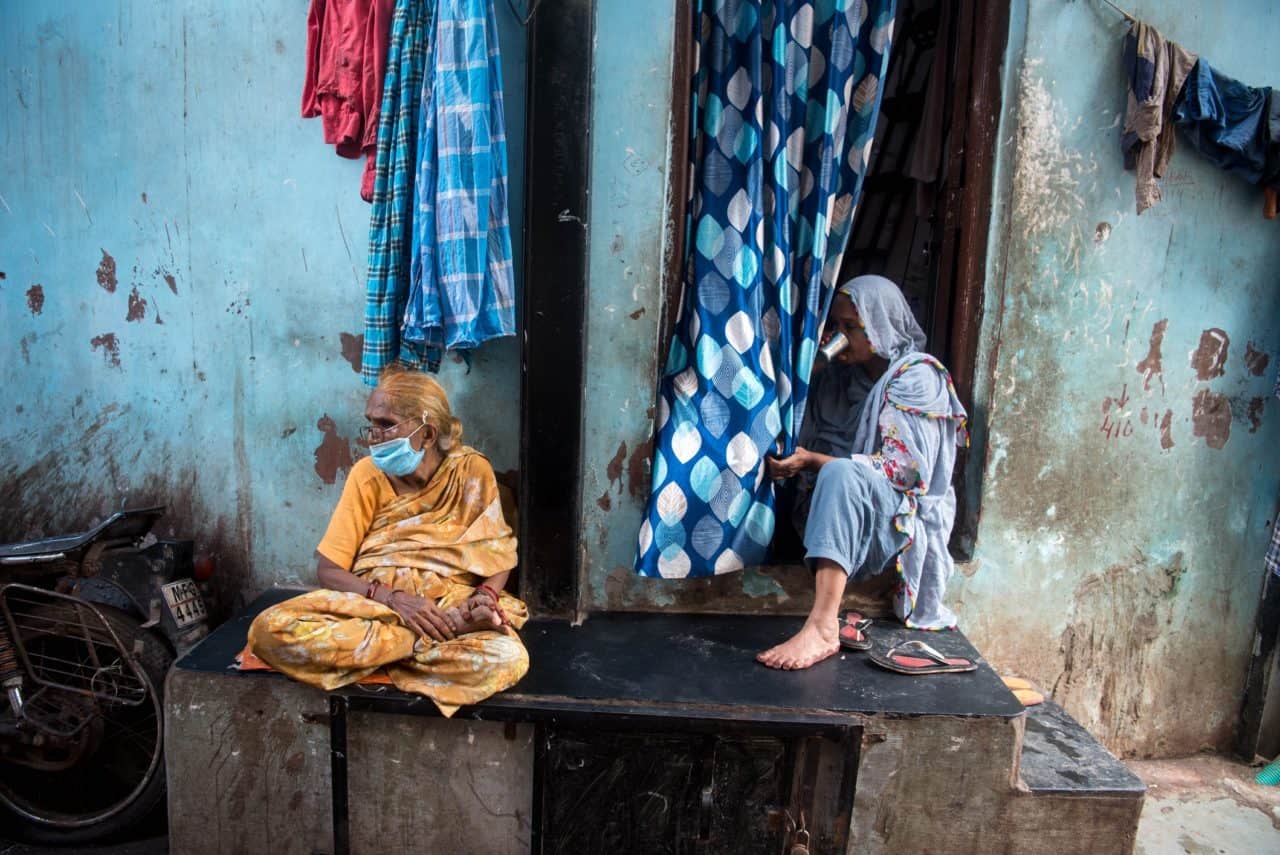
© Manoej Paateel | Dreamstime.com
The COVID-19 pandemic has brought a halt to life as we knew it. We have been restrained in our activities and freedoms, forced to stay indoors at home, to cancel travel plans, and to transfer meetings to an online space, where most of us have also celebrated birthdays and other important life events that should have been in person with our loved ones. These changes have impacted many aspects of our comfort, our social wellbeing, as well as our financial situations, but it has also brought existing inequalities and poverty into the spotlight.
The risks of the pandemic and restrictions following containment measures have been felt most acutely by the poor, the vulnerable, those in the informal sector, and those without savings and safety nets. The suffering of women in the health sector, school children in households without electricity and internet, workers in the informal sector that don’t have the option to telework, crowds living in slums – to name just a few examples of vulnerable groups – have become glaringly visible to all. These people have had to adapt to new rules and conditions when they were living on the edge even before the pandemic.
In a new perspective piece published in the journal Frontiers in Sustainable Cities, we explored how aspects related to access to shelter/housing, modern energy, and digital services in cities have influenced the poor and what can be done to increase the future resilience of vulnerable populations.
We described three ways in which the COVID-19 pandemic and related containment measures have exacerbated urban inequalities, and identified how subsequent recovery measures and policy responses could redress these.
First, lockdowns amplified urban energy poverty. Staying at home has meant increased energy use at home. For the poor, who already struggle with utility costs, and typically live in low energy quality buildings, these services have become even more unaffordable. These populations also shoulder a higher burden of poor health, for example, higher incidence of respiratory problems, with poor or inadequate ventilation and insulation increasing their risk of infection even more.
Second, preexisting digital divides have surfaced, even within well-connected cities. Multiple barriers limit digital inclusion: access to digital technologies due to high costs (for devices, internet access, and electricity connections), and unreliable services (again both for electricity and internet), as well as low digital literacy and support. This lack of adequate digital service access is contributing to these populations falling further behind during lockdowns as they miss out on education and income.
Third, slum dwellers in the world’s cities have been particularly hard hit, because of precarious and overcrowded housing conditions, lack of basic infrastructure and amenities, and a high concentration of the socioeconomically disadvantaged, resulting in even more negative consequences of lockdown measures. With many slum inhabitants working in the informal sector, many have been left either without jobs and income, or have been compelled to work in precarious and unsafe conditions to survive. The loss of income has also had knock-on effects, making payments of regular expenditures for rent, water, electricity, and other utility services difficult. Women within these settlements have been disproportionately impacted by the pandemic, as they are over represented in the informal economy, and more likely to be engaged in invisible work, such as home-based or domestic and care work.
Recovery measures need to ensure immediate relief, but also point towards long-term solutions that contribute to the redistribution of wealth and new urban development, while also increasing resilience to the current and future pandemics or other disasters. There are tested measures that should be reemphasized.
Urban green recovery plans that include large-scale home renovation programs could ensure warm, healthy homes, and affordable energy bills for all. In the shorter-term, alleviation of payment defaults on the rents and utility bills of the energy poor should continue. In parallel, urban digital preparedness, more equal access to the virtual delivery of essential services, and provision of opportunities for virtual working and education for all in the future, need attention.
COVID-19 can be a wake up call to increase efforts to close the digital divide and push for structural change. The crisis has increased the urgency to redesign and improve informal settlements and provide adequate and efficient services that address the diverse needs of poor urban residents. This requires partnerships between urban municipalities, planners, and stakeholders, as well as strengthening local communities for inclusive planning strategies. More immediately, it is necessary to provide direct support to slum and informal settlement populations in terms of income support, adequate nutrition, energy, water, and other basic infrastructure and services.
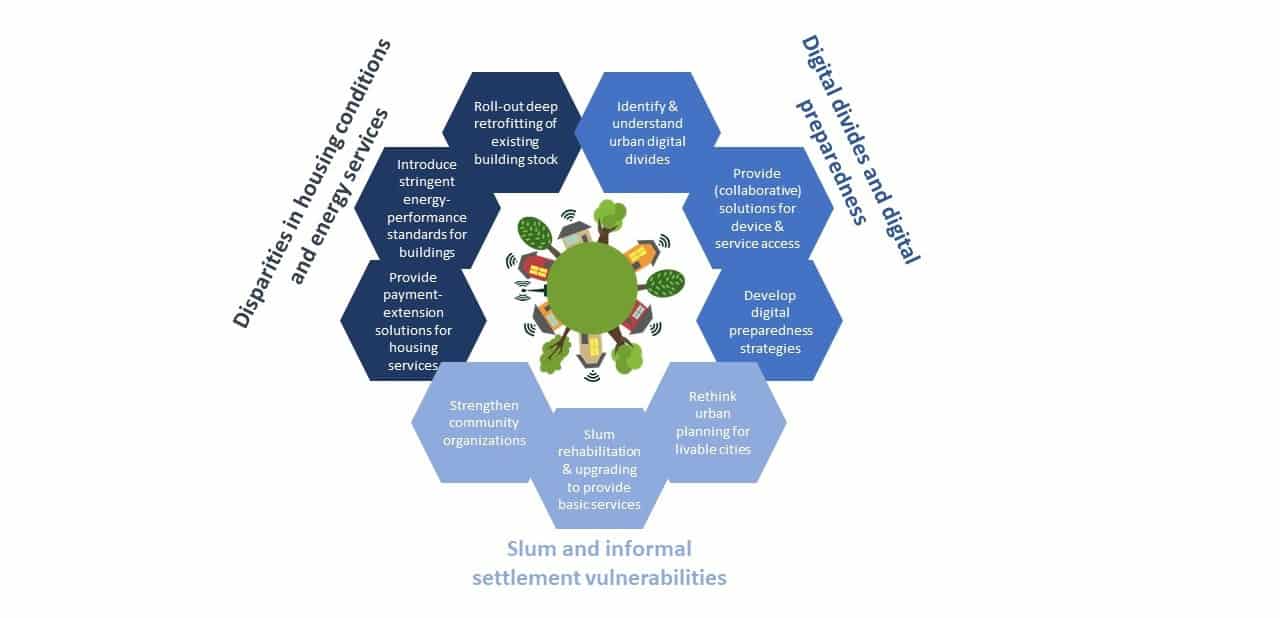 All in all, the COVID-19 pandemic has been a “test of societies, of governments, of communities, and of individuals”. Digital technologies, home renovation, and slum rehabilitation are the means, rather than the end to improve conditions for all, but if specifically targeted to the poor and most deprived, such measures can reduce inequalities and increase resilience.
All in all, the COVID-19 pandemic has been a “test of societies, of governments, of communities, and of individuals”. Digital technologies, home renovation, and slum rehabilitation are the means, rather than the end to improve conditions for all, but if specifically targeted to the poor and most deprived, such measures can reduce inequalities and increase resilience.
Reference:
Boza-Kiss, B., Pachauri, S., & Zimm, C. (2021). Deprivations and Inequities in Cities Viewed Through a Pandemic Lens. Frontiers in Sustainable Cities 3 e645914. [pure.iiasa.ac.at/17121]
Note: This article gives the views of the author, and not the position of the Nexus blog, nor of the International Institute for Applied Systems Analysis.
Jan 13, 2021 | Communication, Egypt, Women in Science
By Shorouk Elkobros, IIASA Science Communications Fellow
Shorouk Elkobros shares her love for science communication and why she thinks it is pivotal for humanity.
Early 2020, I saw viral GIFs about social distancing and flattening the curve. I remember how useful and accessible it felt to have science communicated in such a fun and non-jargon way, especially during a global crisis.
In today’s post-truth world, misinformation campaigns travel fast. Hence, science communication’s role becomes pivotal to humanity. Anne Glover, the president of the Royal Society of Edinburgh, once said that “research not communicated is effectively research not done.”
What is science communication?
Science communication is the practice of educating and raising awareness of science-related topics. Science communicators, therefore, aspire to bridge the gap between science and the public and to inform decision makers.
But is it that easy?
You guessed it ̶ it is not. However, it is a challenge one would love to take on. Science communication is a constant game of problem solving.
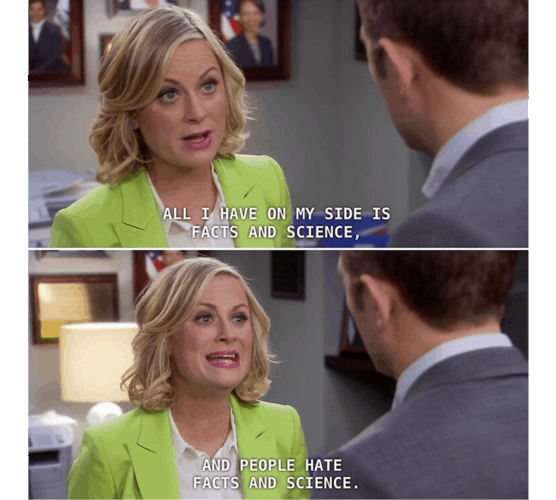
Meme from the American sitcom television series Parks and Recreation | awwmemes.com
It is never about dumbing down information but rather about making it concise and clear. It requires a decent amount of practice, careful attention to language, and a deep understanding of the audience.
Enticing readers with clickbait information and sensationalized or misleading facts has almost pushed the reputation of science communication under the bus. Examples include the COVID-19 conspiracy theories that emerged amid the pandemic or climate change deniers’ campaigns that share fake scientific news to mislead the public.
Why I love science communication?
I come from a science background and a love for visual storytelling. After earning my master’s degree in climate sciences, I chose to become a science communicator because it brings me joy to make science relatable and fun for the public. For me, science communication is a great way to mainstream climate action.
In 2019, I worked closely with the CLICCS B1 team at the University of Hamburg, Germany, where I investigated how our imaginations of possible and plausible climate futures are socially and culturally constituted and embedded in broader visions of the future and belief systems. One thing I learned was that the mainstream media either tones down the climate crises or spreads alarming and apocalyptic messages. It was an eye-opening experience to investigate how climate change is communicated in the media and to recommend amends. However, I always wanted to practice what I preached. I was lucky to volunteer as an editor on the Climate Matters blog and as a video editor in conferences such as Tropentag 2019. The sense of satisfaction that I felt every time I worked on an article or a video made me realize that I want to pursue a career in science communication.
IIASA Science communication
In 2020 I was looking for opportunities to embark on a science communication learning journey to become a better science writer and a better storyteller. Having the chance to do a Science Communication Fellowship at IIASA was an experience that I hold near and dear to my heart. This program is targeted towards early career science communicators who want to sharpen their science communication skills. It was the perfect opportunity for me to transition from academia to the practical field.
Working closely with researchers to produce content on blogs, videos, and news-in-brief articles in the Options magazine 2020 winter edition gave me an excellent perspective on environmental, economic, technological, and social change all around the globe. Knowing that my work can provide the needed information to policymakers is so rewarding because I know it can make a change in the years to come. Interviewing early career researchers and IIASA Young Scientists Summer Program alumni, and listening to them discussing their work and future aspirations was awe-inspiring. I think my favorite project was producing a video on the biodiversity work done at IIASA because I was able to look beyond the research and highlight the researchers behind it. I figured one way people would relate to the science is if I put a human face to it.
Working as part of the IIASA communications team has been a blast. For this blog, I asked my team members why they love science communication, and here are some of my favorite replies:


 Communicating research addressing issues such as food and water security, biodiversity, or climate change can boost regenerative economies and decentralized renewable energy systems. It then becomes pivotal for humanity to give a voice to young people, grassroots movements, and people of color. Historically, researchers involved in outreach gave science communication its modern shape. Today, I think we live in a golden age of science communication. There are more thought-provoking science stories than ever before. Scientists blogging about science, science communicators using social media to promote recent publications, and storytellers creating science-oriented videos or designs, are all doing magnificent work, and I am lucky to count myself as one of them.
Communicating research addressing issues such as food and water security, biodiversity, or climate change can boost regenerative economies and decentralized renewable energy systems. It then becomes pivotal for humanity to give a voice to young people, grassroots movements, and people of color. Historically, researchers involved in outreach gave science communication its modern shape. Today, I think we live in a golden age of science communication. There are more thought-provoking science stories than ever before. Scientists blogging about science, science communicators using social media to promote recent publications, and storytellers creating science-oriented videos or designs, are all doing magnificent work, and I am lucky to count myself as one of them.
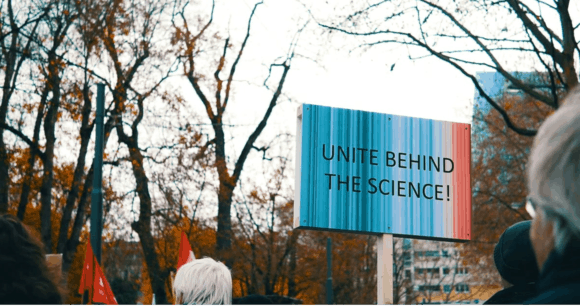
@ Lennart Wittstock | Pexels.com
Note: This article gives the views of the author, and not the position of the Nexus blog, nor of the International Institute for Applied Systems Analysis.











 Communicating research addressing issues such as food and water security, biodiversity, or climate change can boost regenerative economies and decentralized renewable energy systems. It then becomes pivotal for humanity to give a voice to young people, grassroots movements, and people of color. Historically, researchers involved in outreach gave science communication its modern shape. Today, I think we live in a golden age of science communication. There are more thought-provoking science stories than ever before. Scientists blogging about science, science communicators using social media to promote recent publications, and storytellers creating science-oriented videos or designs, are all doing magnificent work, and I am lucky to count myself as one of them.
Communicating research addressing issues such as food and water security, biodiversity, or climate change can boost regenerative economies and decentralized renewable energy systems. It then becomes pivotal for humanity to give a voice to young people, grassroots movements, and people of color. Historically, researchers involved in outreach gave science communication its modern shape. Today, I think we live in a golden age of science communication. There are more thought-provoking science stories than ever before. Scientists blogging about science, science communicators using social media to promote recent publications, and storytellers creating science-oriented videos or designs, are all doing magnificent work, and I am lucky to count myself as one of them.
You must be logged in to post a comment.